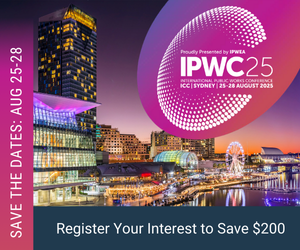Petri Vainio, president of the Finnish Association of Municipal Engineering (FAME) chapter of asset management, believes forest management and asset management have a lot in common.
“The basic questions of forestry are pretty much the same as in municipal engineering,” says Vainio, who has a master’s degree in forest management and mensuration, a branch of forestry concerned with measurement of trees and forests.
Like asset managers, “forest owners have to know where one’s forests are located, what condition they are in and what kind of operations they need,” he says. In both forestry and asset management, practitioners must assess the economic outcomes of many possible avenues and choose the most appropriate course of action.
At just two years old, FAME is a new organisation, which means its roles and routines are still a work in progress, Vainio says. So far, the organisation has run seminars and workshops, and published professional and technical resources.
Its leadership rotates in a three-year cycle. In 2021, Vainio was the vice president and in 2023 he will become the senior president, a position that supports the president.
One of the organisation’s main roles is to form a hub for people who work in Finland’s municipal engineering industry across the public and private sectors. As president, Vainio says he hopes to serve as a communication channel for the organisation’s members, facilitating the sharing of knowledge and advice.
Asset management in Finland
Asset management in Finland faces a unique set of challenges. The nation underwent significant urbanisation in the 1980s and ‘90s, which led to dramatic growth in metropolitan areas and a corresponding decline in smaller cities and villages.
“This evolution means that the five or six largest cities in Finland now have a massive amount of infrastructure which will soon be 50 years old and need to be totally rebuilt,” says Vainio.
Renewal of this ageing infrastructure requires both major political and financial investment. While politicians and decision-makers are quick to back new, high-profile infrastructure projects, Vainio says it is more challenging to find support to carry out necessary – but “invisible” – maintenance on existing assets.
Part of the problem is that fact that in Finland, asset management is a still-developing field, says Vainio. To illustrate his point, he lists six essential questions that must be addressed in asset management:
- What is the asset?
- Where is it located?
- What is its technical condition?
- What is its maintenance history?
- What are its management needs in the future?
- Does it fulfill its original purpose according to today’s demands?
The majority of Finnish organisations can confidently answer questions one and two, says Vainio, and some organisations might have the data required to answer questions three and four. However, “the answers to questions five and six are usually quite unknown,” he notes.
Finnish asset management requires further development to build the capabilities required to answer all six questions, Vainio says.
Central to this undertaking is an increased focus on education and training. “Professional asset managers should not only have good knowledge of physical asset management, but also at least basic knowledge of GIS and/or databases,” he says.
Without this technical knowledge, it is difficult to effectively tackle large-scale asset management tasks. “Too often, we tend to think that an asset manager should only have knowledge about how the work is done,” such as, “which type of machine is the best at removing snow in given conditions,” Vainio says. However, “to optimise the whole fleet’s actions, we need more skills on data collection and analysis.”
In Finland, there is a gap between these two sets of skills, which Vainio says must be addressed through education and training. He also believes there is potential to share knowledge, skills and insights across international borders.
“One of the highlights in my career was when I was able to visit PWX (Public Works Expo) in Seattle in 2019, just before the Covid-19 limitations,” he says. “Too often we tend to think that the circumstances vary greatly from one country to another and we cannot benchmark innovations over the borders.”













